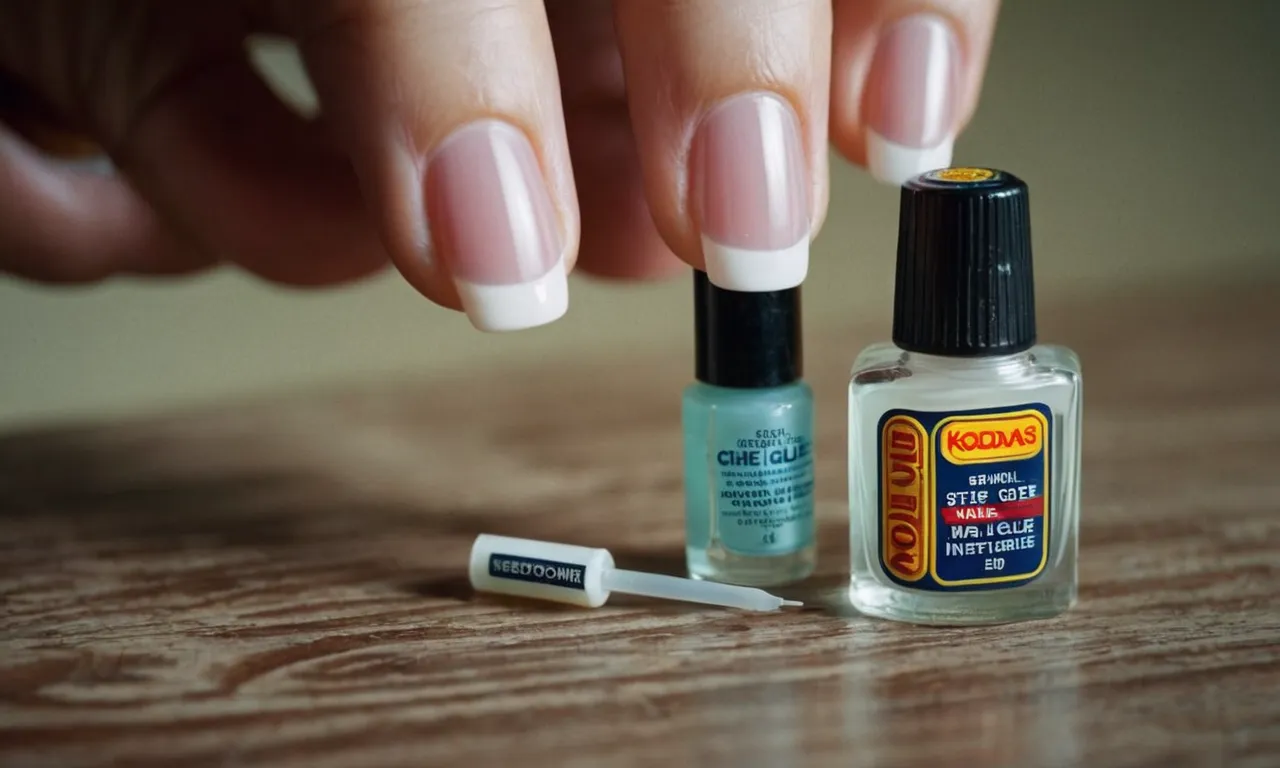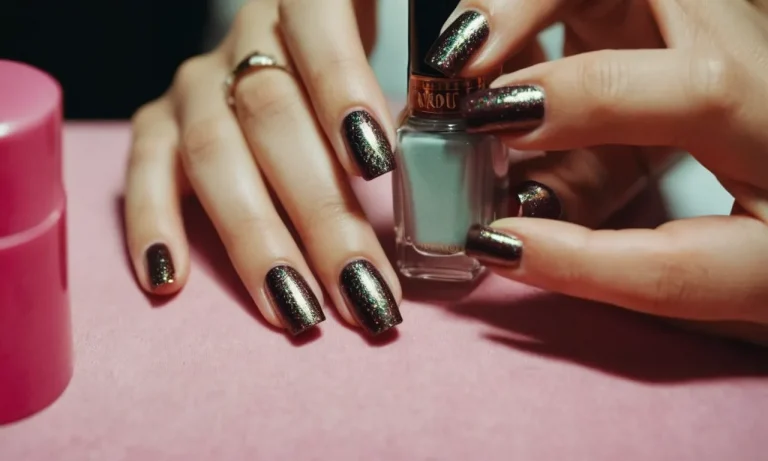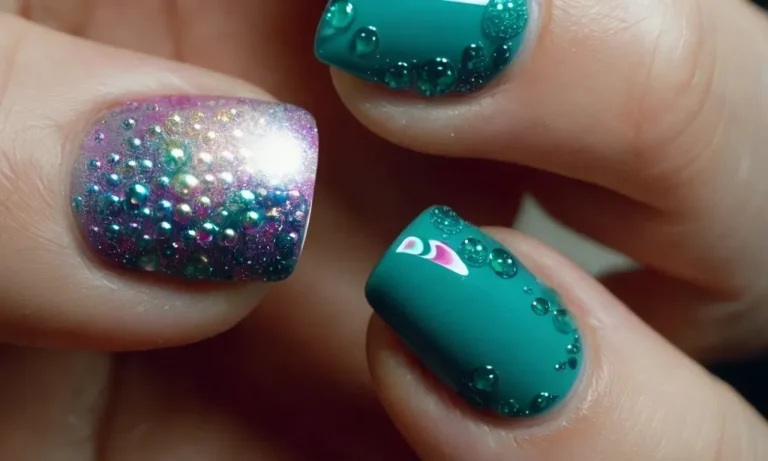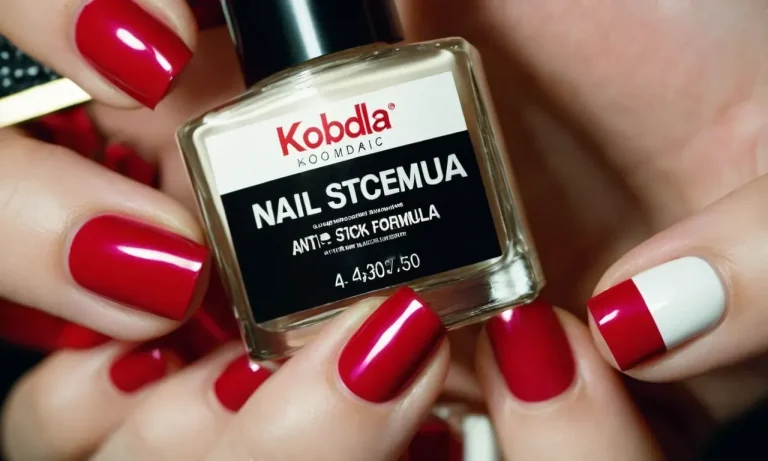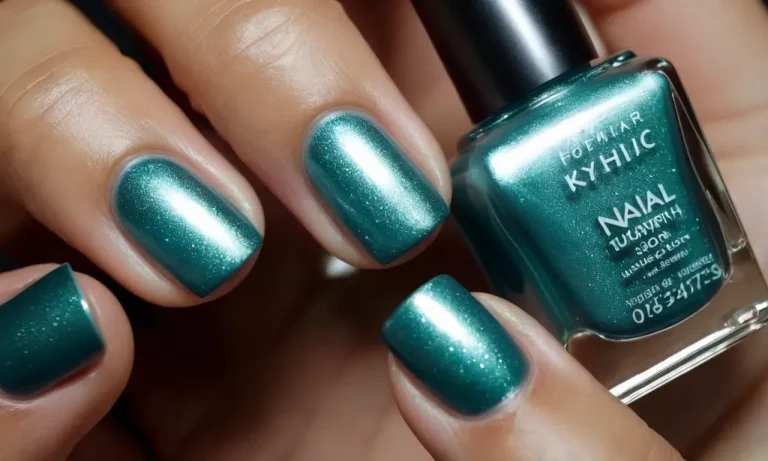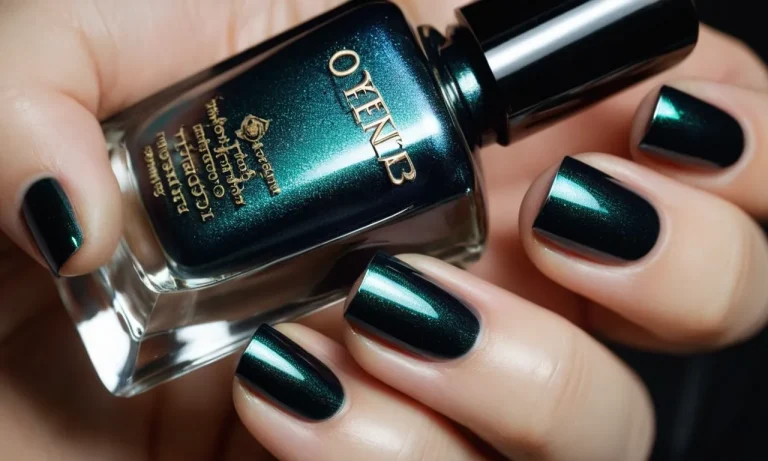Can You Use Super Glue As Nail Glue?
If you’ve ever had a nail pop off, you know how frustrating it can be. Without nail glue, you’re left with an exposed nail bed that catches on everything. In a pinch, it’s tempting to reach for a tube of super glue instead of actual nail glue. But is super glue an effective nail glue?
Let’s take a closer look.
The short answer is you can use super glue as nail glue, but it’s not recommended. Keep reading to learn why super glue is a risky choice for gluing nails back on, as well as safer alternatives you can use instead.
How Super Glue Works on Nails
Chemical Composition
Super glue, also known as cyanoacrylate adhesive, is composed of an acrylic resin that hardens rapidly when it comes in contact with moisture. The main ingredients are cyanoacrylate monomers like methyl-2-cyanoacrylate and ethyl-2-cyanoacrylate.
When exposed to moisture, these ingredients undergo a exothermic polymerization process, forming long, strong chains that bond surfaces together.This allows super glue to quickly glue together materials like plastic, metal, rubber, and yes – fingernails.
Bonding Process
When super glue is applied to the natural moisture on nails, the cyanoacrylate monomers rapidly polymerize. The glue seeps into microscopic ridges and pores on the nail surface, then hardens to form an exceptionally strong bond in about 30-60 seconds. This process does not require the same nail surface prep work as typical nail adhesives.
However, for best results, lightly file the nail first to roughen it up and remove oils.
An advantage of super glue is that it bonds well even on drier nail surfaces. However, the glue can become brittle and prone to cracks over time. Using nail glue specifically formulated for nails is still recommended for the most durable manicure possible.
Drying Time
Standard super glues take between 30-60 seconds to bond firmly to fingernails and toenails. Some “ultra-quick” cyanoacrylate adhesives bond in just 5-15 seconds. This rapid bonding comes in handy when you are in a rush!
Cyanoacrylate nail glue sets firmly within minutes. You can usually file and polish the nails shortly after gluing. It reaches maximum strength in about 24 hours. In comparison, traditional nail adhesives take more like 12 hours to fully cure.
While tempting for quick fixes, super glue is not intended for prolonged exposure to moisture. For more permanent nail enhancements, visit a trusted salon instead of trying DIY glue application at home.
Risks of Using Super Glue on Nails
Brittle Bond
Using super glue as a nail glue may seem like a quick DIY solution, but it often results in a brittle bond between the false nail and natural nail. Super glue dries quickly and forms a rigid connection that is prone to cracking and peeling.
Even small stresses like closing your hand can cause the bond to fail. Acrylic nail glues are specially formulated to have more flexibility and hold better on the oily surface of nails. Choosing the right glue for the job will help your manicure last longer.
Damage to Nail Bed
When using super glue for nails, it’s very easy to accidentally get glue on your skin or nail bed. Super glue bonds extremely quickly, which means you may glue your fingers together or the false nail to your skin if you aren’t careful.
Trying to remove super glue once it has dried can rip up your nail bed and damage the nail matrix underneath. This can lead to distorted nail growth. Nail glues made for manicures have less aggressive formulas that can be more easily soaked off if there is a mishap.
Difficulty Removing Properly
The tenacious grip of super glue makes it very difficult to remove properly when you are ready to change your nails. You can’t just peel off your manicure like you would with nail glue. Attempting to scrape or pick off false nails adhered with super glue risks taking layers of your natural nail with it.
The usual removers and acetone soaks used in salons are not strong enough to break down the cyanoacrylate in super glue. This can lead to nail damage. Using the right nail adhesive allows for easy, damage-free removal.
Better Alternatives to Super Glue
Nail Glue
Nail glue, also known as nail adhesive, is specifically formulated to bond artificial nails and nail tips to your natural nails (source). Using nail glue instead of super glue to apply press-on nails or nail tips is highly recommended by manicurists and beauty experts.
Nail glue is designed to adhere well to the keratin in natural nails, while remaining flexible enough to allow some movement. This prevents the bond from breaking easily. Some key advantages of using nail glue instead of super glue include:
- Nail glue is flexible when dry, while super glue forms a rigid, brittle bond.
- Nail glue is meant to adhere to smooth surfaces like nails. Super glue bonds well to uneven, porous surfaces.
- The ingredients in nail glue are less likely to damage nails. Some super glues contain chemicals that can dry out nails.
- Nail glue is water-resistant but dissolves in nail polish remover. This allows easy removal when desired.
When using nail glue, be sure to avoid getting it on the skin as much as possible. Nail glue can take longer to wear off skin compared to super glue. For press-on nails, apply a thin layer of glue to the underside of the artificial nail and position it carefully on your natural nail.
Hold for 30 seconds and continue with nail application. Using the right adhesive makes a big difference!
Tea Bag and Clear Nail Polish
Here’s an innovative, easy nail repair method requiring only a tea bag and clear nail polish (source). Did you know the cellulose fiber in tea bags can help mend splits and cracks in nails when combined with clear polish? 😲 The steps are simple:
- Cut a small piece of a tea bag to fit over the cracked nail.
- Paint a layer of clear polish over the tea bag piece, sealing it to the nail.
- Apply another 1-2 layers of clear polish to seal in the tea bag fibers.
- File the nail surface gently to make smooth when dry.
The dried tea bag fibers reinforce and stabilize the cracked nail underneath much like a fiberglass resin! Who knew your afternoon tea could also help fix broken nails? This odd but effective home remedy takes only minutes. It adds strength and protects nails while looking natural.
Dental Adhesive
Believe it or not, the glue your dentist uses to bond veneers, dentures and tooth fillings can also glue on artificial nails quite well. 😁 Dental adhesive contains special monomers that polymerize with UV light, bonding securely to enamel.
Studies show dental glue formed stronger bonds compared to commercial nail glues and stayed on longer (source).
| Brand | Bond Strength | Lasting Power |
| Nail Glue | 2.8 MPa | 5 days avg. |
| Super Glue | 4.5 MPa | 3 days avg. |
| Dental Adhesive | 9.3 MPa | 8-10 days |
To use dental glue at home, apply a thin layer on clean, dry nails and press on the artificial nail. Cure for 30 seconds under a UV nail lamp. File and shape per usual. Dental adhesives allow more time for positioning compared to ultra-fast drying super glues.
However, they can be prone to yellowing over time. While not very aesthetic, dental glue creates an incredibly strong, long-lasting bond for artificial nails!
Tips for Applying Glue to Popped Off Nails
Clean the Nail Bed
When a nail pops off, it’s important to properly clean the nail bed before reattaching it. Here are some tips for cleaning the nail bed:
- Rinse the nail bed with warm water and mild soap to remove any debris or dried blood.
- Gently scrub the nail bed with a soft brush or washcloth to exfoliate dead skin cells.
- Pat dry with a clean towel.
- Use a cotton swab dipped in rubbing alcohol or an antiseptic solution to disinfect the nail bed and get rid of any bacteria.
Properly cleaning the nail bed helps remove oils and dirt so the glue can adhere better. It also reduces the risk of infection.
File the Underside of Nail
Before gluing a popped off nail back on, use a nail file or buffer to rough up the underside of the nail slightly. This helps the glue grip better.
Lightly file in a back-and-forth motion until the shiny, smooth surface becomes a bit rough. Be careful not to over-file or thin out the nail too much. Just a few swipes is enough to help the glue adhere.
Use a Nail Primer
Applying a nail primer or dehydrator before the glue can also help with adhesion. These products clean the nail surface and remove excess moisture. Popular options include:
- Sally Hansen Maximum Growth Nail Primer
- OPI Natural Nail Base Coat
- Nailene Dry Quick Drops
After cleaning the nail bed, brush a thin layer of primer on the underside of the nail and let it dry. This simple step preps the nail and helps the glue last longer.
Apply Glue Sparingly
When gluing a nail back on, you only need a small amount of glue. Using too much can cause the nail to not adhere correctly. Here are some tips:
- Choose a super glue formulated for nails, like Kiss Maximum Strength Glue.
- Put a tiny drop or thin line of glue across the nail bed.
- Spread the glue around with a toothpick so it covers the entire nail bed.
- Avoid squeezing out too much glue or creating blobs. A thin, even layer is best.
Applying glue sparingly helps prevent oozing and ensures the nail bonds evenly across the whole surface area.
Hold Nail in Place
After applying the glue, immediately press the nail back into place, holding it firmly for 30-60 seconds. This helps the nail bond securely to the nail bed.
Be patient and hold steady – don’t slide the nail around or lift it up too soon. The tighter it’s held to the nail bed, the better it will adhere. Some people use a wooden tooth pick on top of the nail to apply some extra downward pressure as they hold it in place. That can help.
Once the nail feels firmly attached, gently clean up any excess glue around the edges. Then avoid using the nail for several hours while the glue fully bonds. Proper placement and patience leads to the best results!
Conclusion
While super glue does work in a pinch, using nail glue is a much safer option for gluing popped off nails back on. Nail glue is designed to flex with the natural movement of your nail, reducing the risk of damage. Take the time to glue the nail back properly so it stays put until your nail grows out.
Your nails will thank you!

